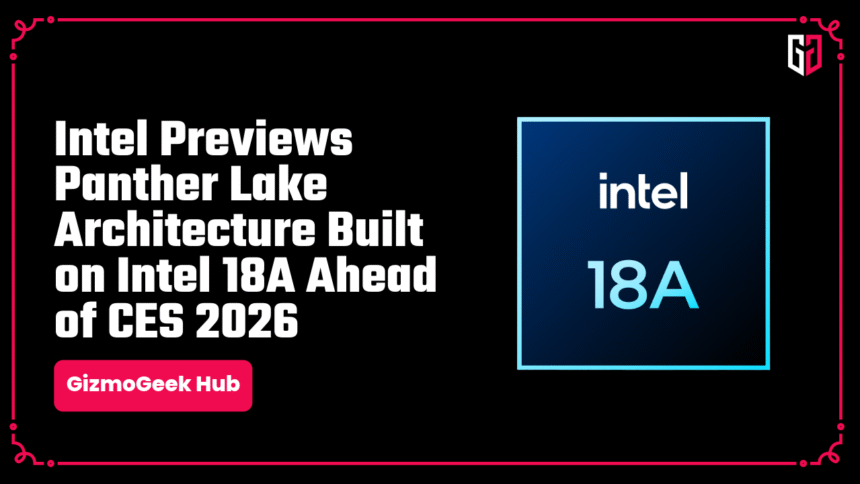Intel unveiled the Intel Panther Lake, slated for release at CES 2026. We received a preview of the Panther Lake’s core designs, performance enhancements, and information about Intel 18A and XeSS 3. Let’s discuss all of these.
Cores, Variants
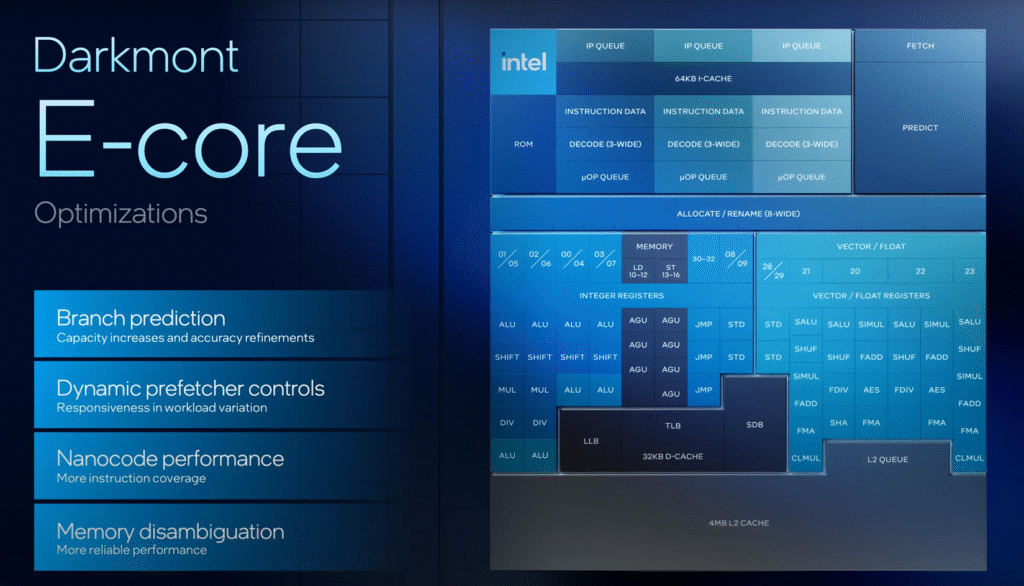

The Intel Panther Lake features a new set of core architectures for P and E cores, respectively, which are named Cougar Cove and Dark Mont. The Dark Mont core features enhancements for branch prediction and dynamic prefetcher controls, which enhance responsiveness to workload variations and improve nanocode performance. These improvements increase instruction code coverage in the E core and enhance memory disambiguation, resulting in more reliable E core performance. The Cougar Cove features enhancements in its core, optimised for PPA (Power, Performance, Area) and AI, enabling power management of the CPU cores.
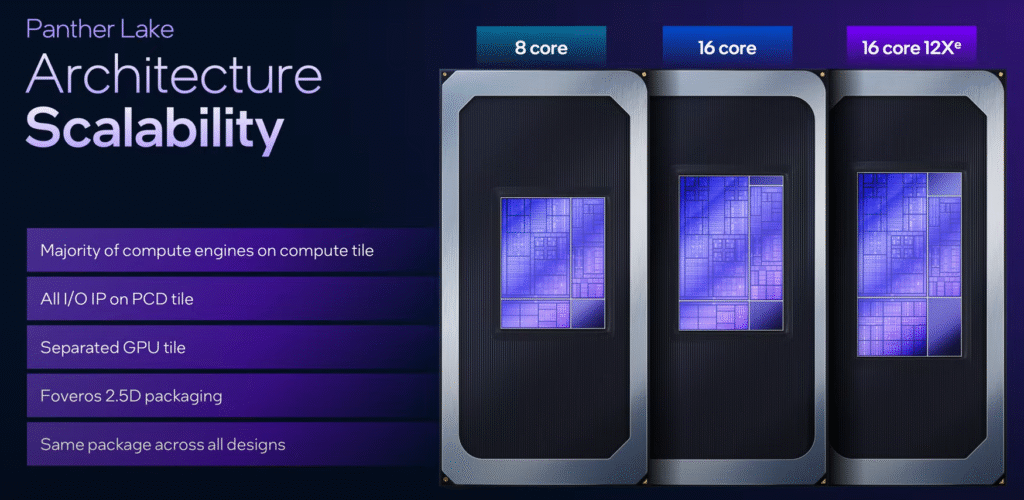

Intel Panther Lake also improves upon the disadvantages of the Lunar Lake CPUs, which had poor multi-core performance. Intel is enhancing these aspects with improved architectural scalability. Intel said there would be three models, which would be the 8-core version, which comes with newer cores and a slower iGPU than Lunar Lake in that config; a 16-core CPU for the power users who want the CPU performance and efficiency; and lastly, a 16-core CPU with the latest Xe3 GPU and twelve Xe cores. The other two CPUs have four Xe cores, so their graphics performance isn’t much better compared to previous generations.
GPU
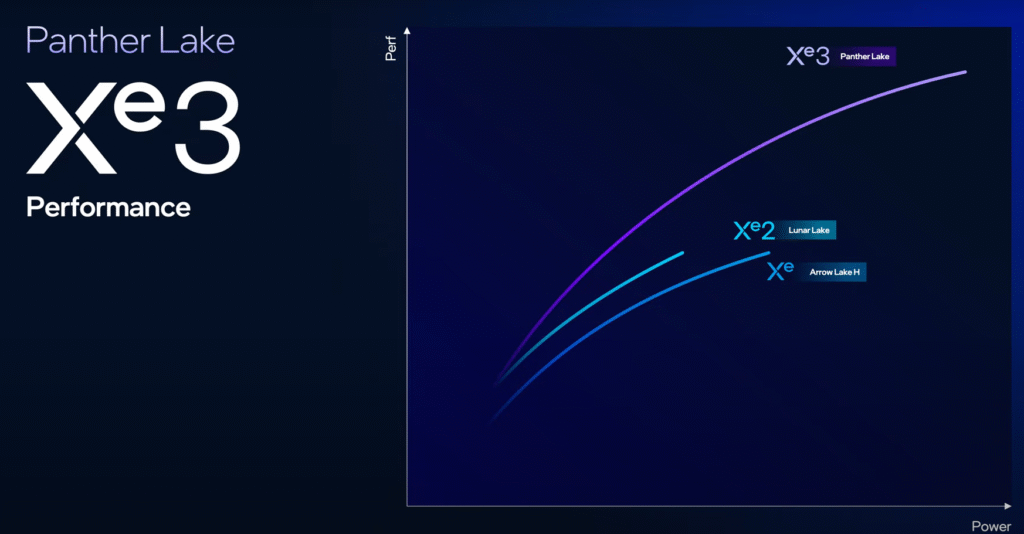

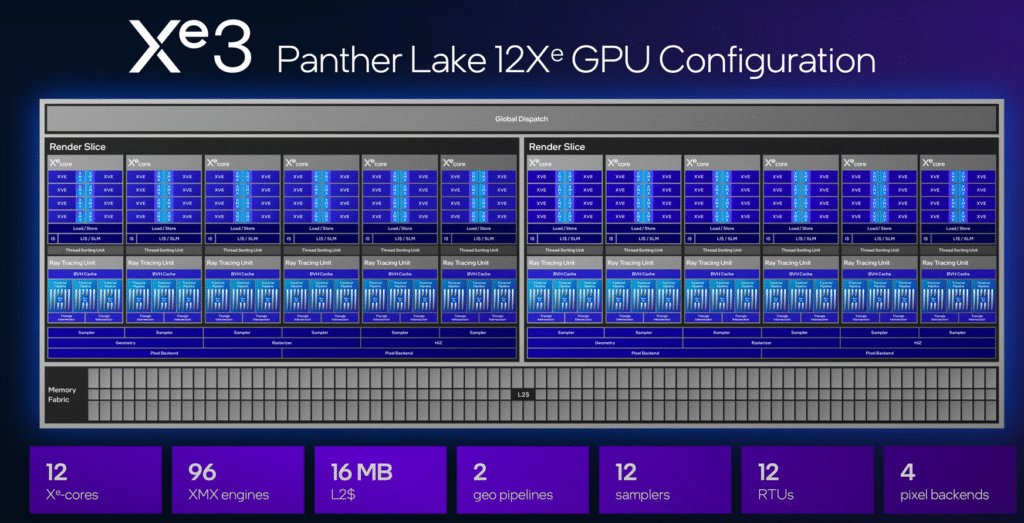

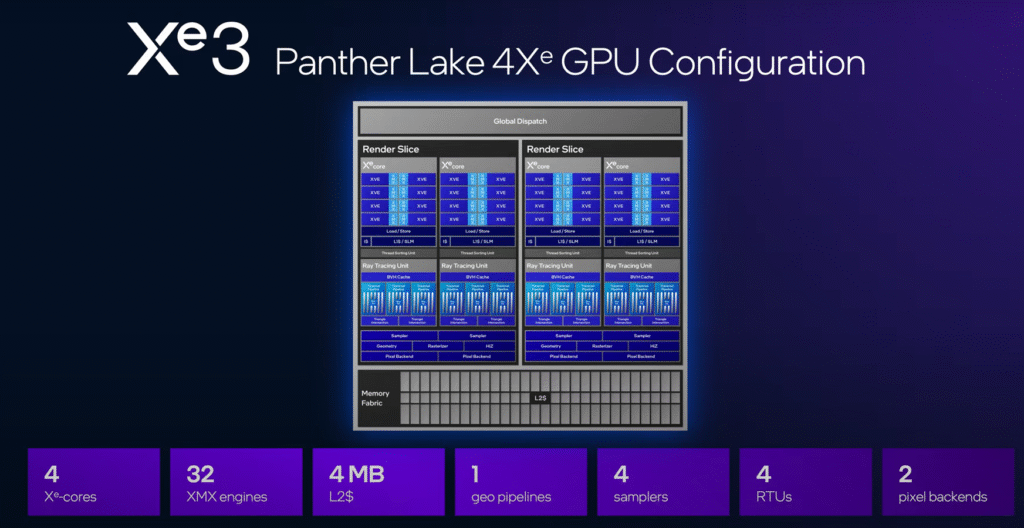

The Intel Panther Lake 12 Xe core model features the largest integrated GPU and has twice the L2 cache. There is also a significant increase in the number of XMX engines with the GPU, going from 64 XMX cores to 96 XMX cores. The architecture has been refined from the Xe2 architecture we found on Lunar Lake. They have increased the L1/L1$ cache by 33% along with an improved ray tracing unit and a more efficient Xe vector engine, which enhances overall utilisation. Additionally, this architecture introduces support for 10-bit AVC and AV1 as well as compatibility with Sony XAVC codecs in the media engine.
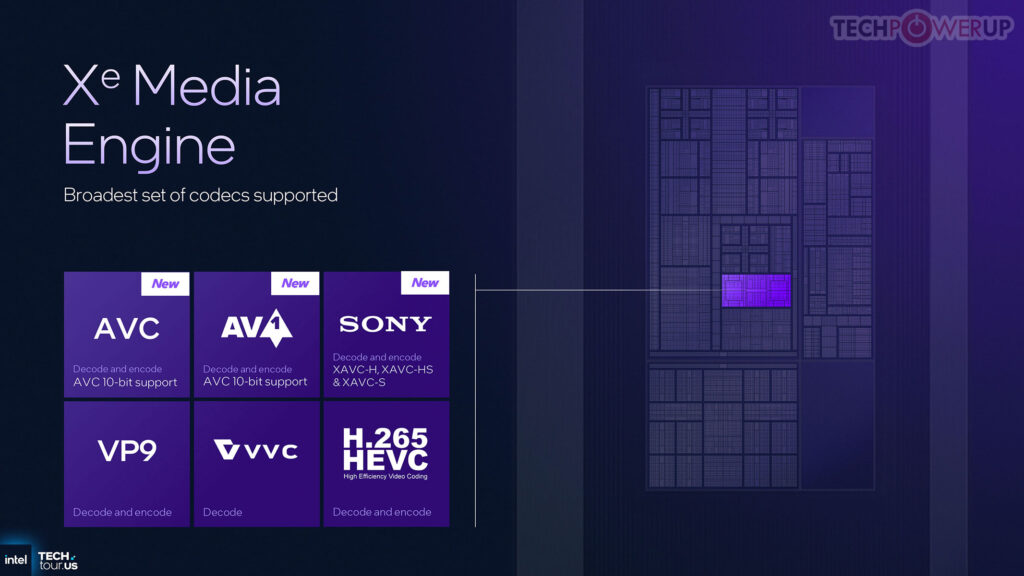

There are improvements to the power delivery via platform tuning, according to Intel, so now Intel says it can give more headroom to the larger GPU configurations. For example, if GPU usage is higher, then the system will automatically switch to E-cores to reduce the CPU power consumption to allocate more power to GPUs, and according to the picture shown below, the power delivery to the CPU, GPU, and others is great and looks stable.
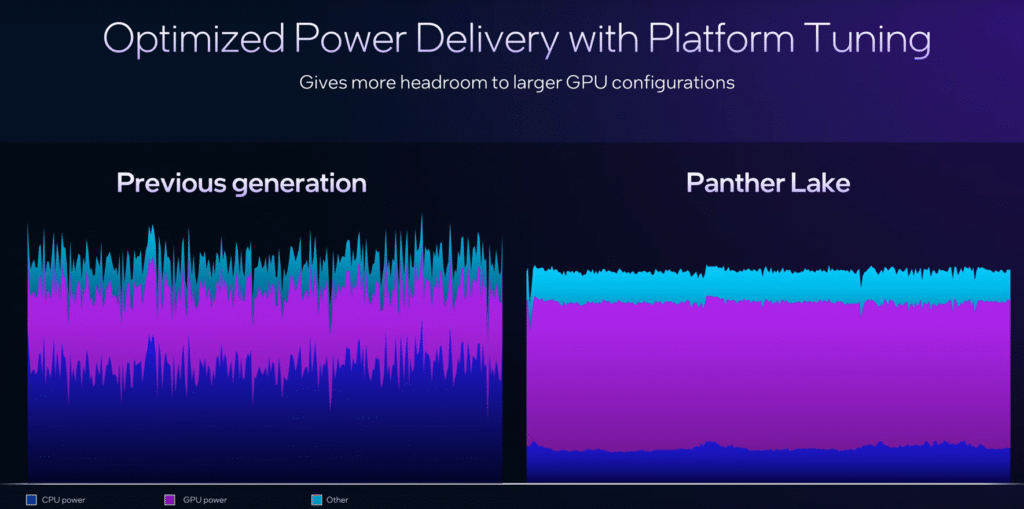



Coming to the XeSS 2 last year, Intel brought out Intel XeSS Super Resolution, Frame Generation, and Xe Low Latency, and this year they are bringing multi-frame gen, which was only on the Nvidia 50 generation GPUs, which is great, and with all these and the core improvements, the 12 Xe core variant is 50% faster than the Xe 2 Lunar Lake and brings in 40% improvements in perf per watt vs. Arrow Lake, and the 4 Xe core variant is for the thin and light where the efficiency matters more over the peak performance achieved.
The 4 Xe core variant is built on the Intel 3 process, while the 12 Xe core is built on the TSMC 3nm process node.
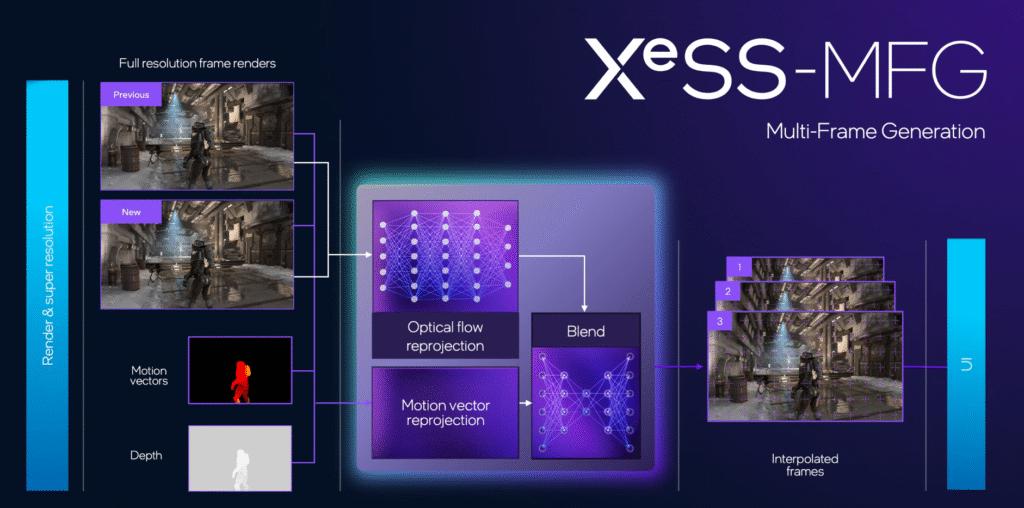

Power and Efficiency
The Compute tile is produced using Intel’s 18A process, which is the key highlight for the company and Panther Lake, marking the first 2 nm class made in the USA, representing a significant advancement over the TSMC N3B node used in the Lunar Lake. And with all the new cores, the Panther Lake, according to Intel, can provide 50% more performance while using the same amount of power and 30% less power while being at similar performance levels. And Intel also claims that their Darkmont E-cores can provide Raptor Lake performance at lower power.
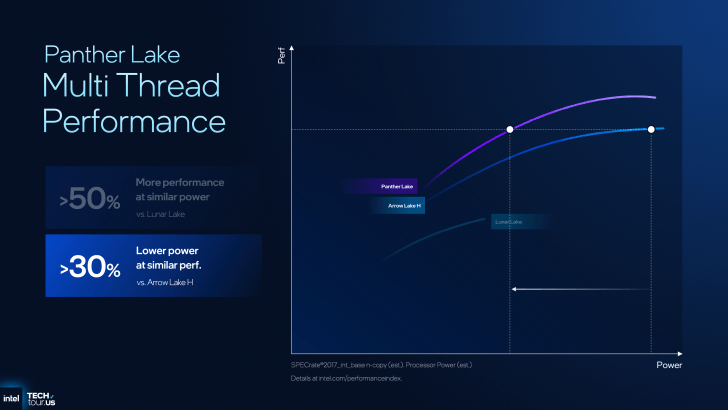

Intel has also introduced the intelligent experience optimiser, which automatically enhances the user experience and adjusts the Windows power modes accordingly. It shows a 19% improvement in performance tasks compared to the baseline, which is excellent, and in the same power budget.
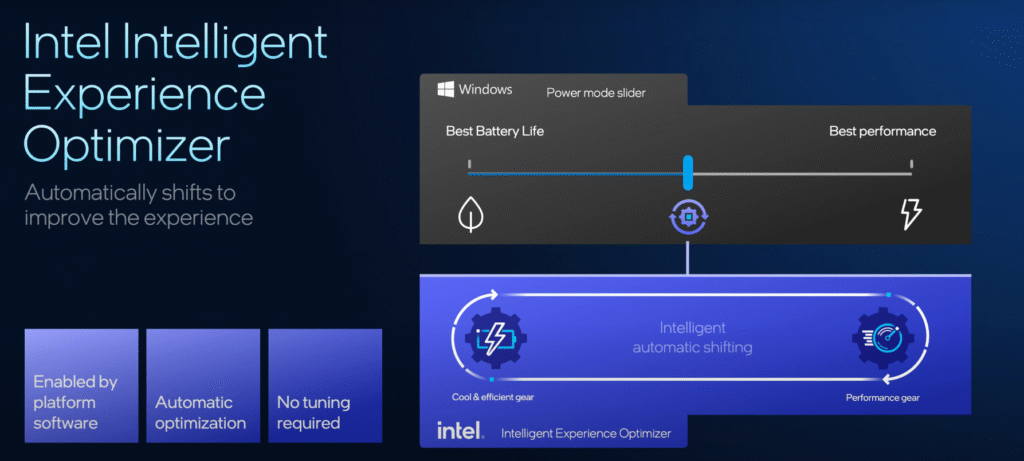

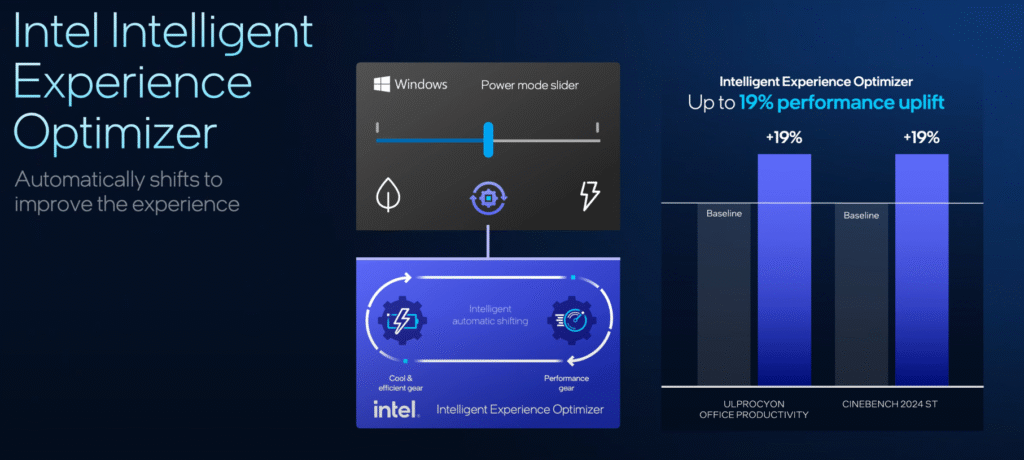

NPU
The NPU 5 focuses on scaling down the size of the NPU while optimising for other loads, and the new NPU 5 brings a 40% enhancement to TOPS per area, which is impressive since it’s scaling down the NPU. Additionally, the NPU 5 brings support for FP8 datatypes, which can provide more efficiency and a reduced memory footprint, and we are getting three neural compute engines, while the previous-gen Lunar Lake had five neural compute engines, but the size of the neural compute engines has been increased for the scaling since the Mac size has been doubled according to Intel vs Lunar Lake.
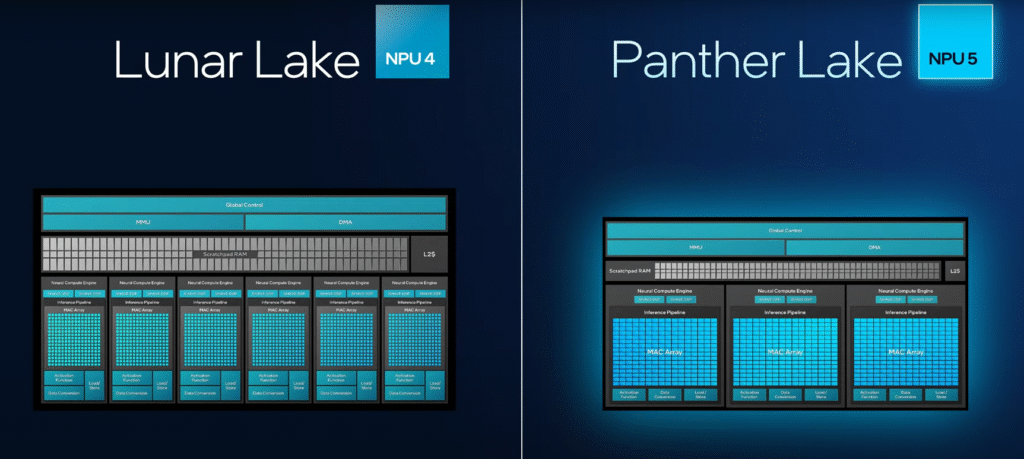

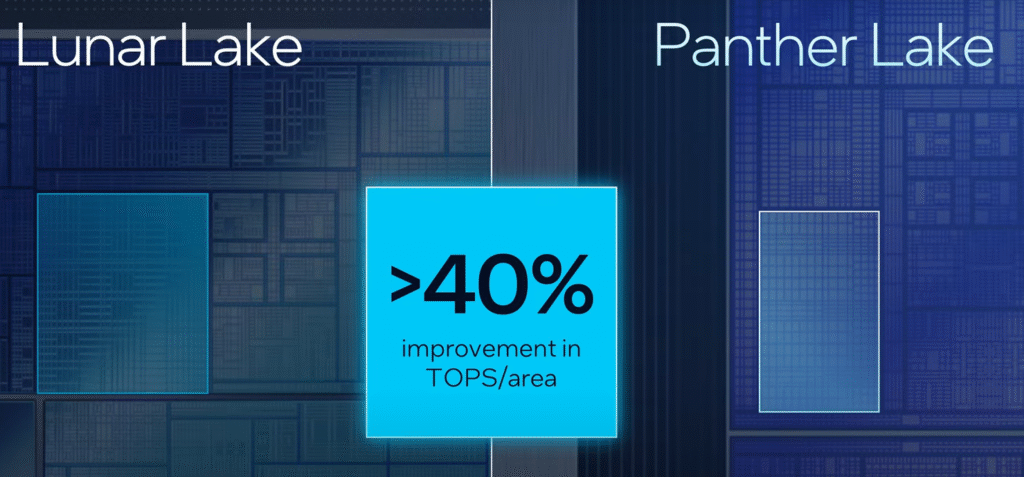

Availability
Intel said that the high-volume production should start this year, with the first SKU slated to ship before the end of the year and broad market availability starting from January 2026, so by January 2026, we should begin to see the SKUs and laptops released by that time.
We hope you found this article helpful. Keep exploring GizmoGeek Hub for more tech news, stories, and reviews that will keep you informed about the latest trends and advancements in technology. We aim to provide detailed and unbiased reviews, thorough tutorials, and current news to help you enhance your tech knowledge and skills. Continue reading GizmoGeek Hub for more articles and reviews. Follow us on YouTube, X (formerly Twitter), Instagram, LinkedIn, and our WhatsApp Channel to stay updated on the newest news, announcements, and behind-the-scenes content.
Request – As a new site, we largely depend on ad revenue to support our operations. Please consider turning off any ad blockers you use when visiting our website. Viewing ads helps us continue delivering the high-quality content you enjoy. Your support is very important to us and helps keep GizmoGeek Hub running smoothly. We sincerely appreciate your ongoing support, and thank you for sticking with us!

